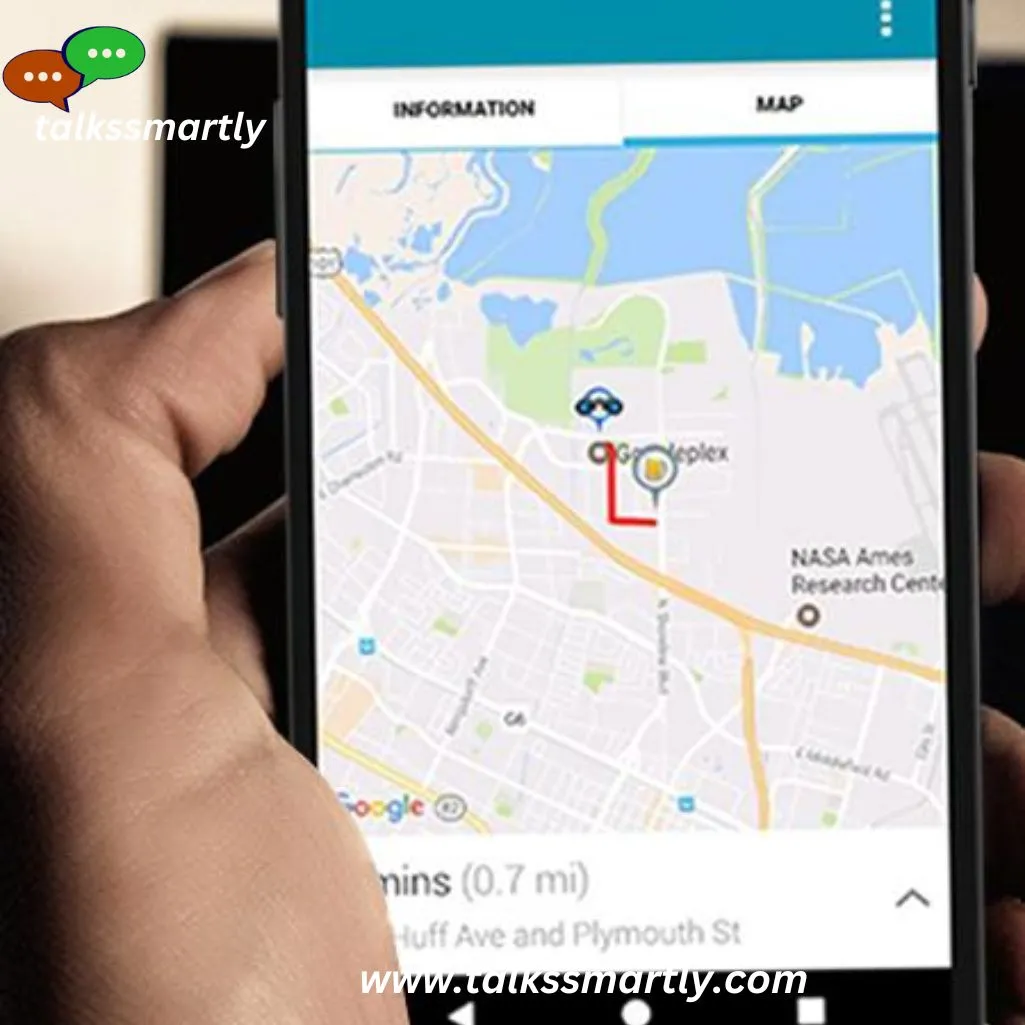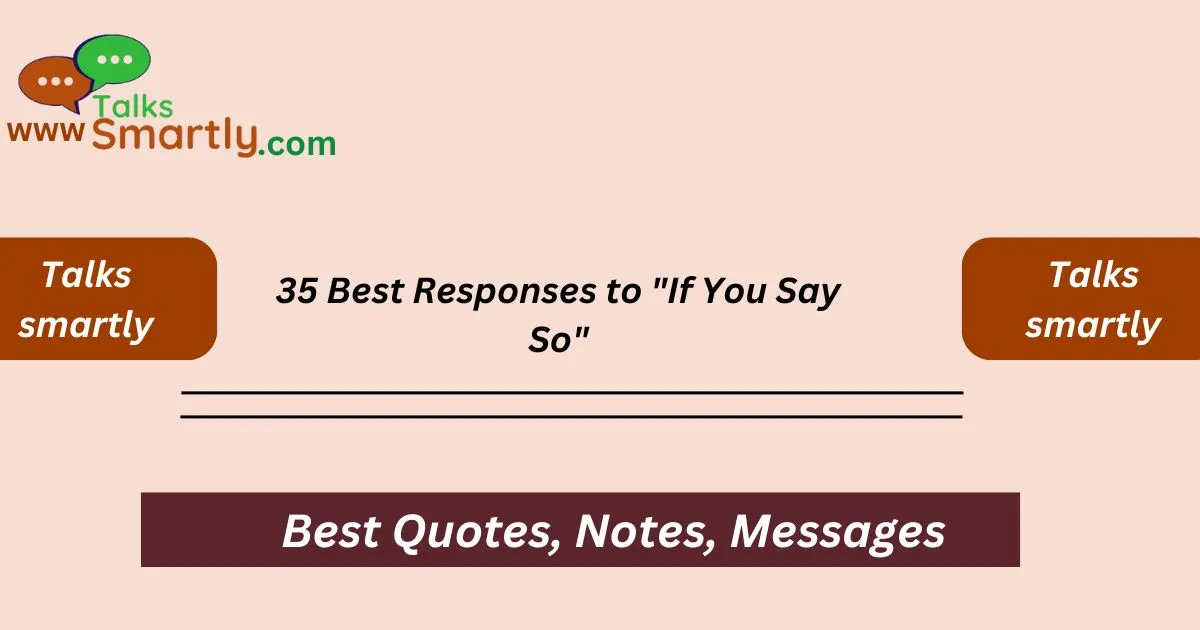“Finding the right comeback to “If you say so” can make all the difference in a conversation.“
Sometimes, when someone says, “If you say so,” it can come across as dismissive or passive, leaving you unsure of how to respond. Whether the person is agreeing reluctantly, brushing you off, or simply doesn’t care, knowing how to handle this phrase can make all the difference.
In this guide, we’ll explore 35 of the best responses to “If you say so,” helping you navigate different situations with confidence, humor, or assertiveness depending on the tone and context. Whether you want to keep the conversation light or dive deeper, these responses have you covered.
35 Best Responses to “If You Say So”
- Acknowledge and Redirect
- Assertive Confirmation
- Seek Clarification
- Offer Additional Information
- Use Humor
- Ask a Thought-Provoking Question
- Express Empathy
- Reiterate Your Point
- Employ a Logical Argument
- Challenge the Statement
- Use a Metaphor
- Share Personal Experience
- Propose a Compromise
- Stay Silent
- Express Surprise
- Offer a Solution
- Use a Quotation
- State Your Intent
- Request Feedback
- Use a Softened Approach
- Be Direct
- Show Understanding
- Maintain Confidence
- Be Playful
- Highlight Benefits
- Draw Parallels
- Provide Examples
- Ask for a Reason
- Seek Agreement
- Reframe the Statement
- Use a Rhetorical Question
- Be Patient
- Confirm Understanding
- Highlight Common Ground
- Use a Positive Affirmation
1. Acknowledge and Redirect
Acknowledging and redirecting is a simple way to keep the conversation moving without getting stuck.
Example: “I understand your point. Let’s move on to discuss how we can implement this idea.”
2. Assertive Confirmation
Assertive confirmation can help reinforce your stance and encourage further discussion.
Example: “Yes, I am confident about this. Let’s go over the details to ensure we’re on the same page.”
3. Seek Clarification
When someone responds with “If you say so,” asking for clarification can help reveal their true feelings.
Example: “Could you explain what you mean by that? I’d like to understand your perspective better.”
4. Offer Additional Information
Providing additional information can support your position and make your argument more compelling.
Example: “I have some data that supports my point. Would you like to see it?”

5. Use Humor
Using humour can defuse tension and make the conversation more pleasant.
Example: “If I say so, then it must be true! But seriously, let’s look at the facts.”
6. Ask a Thought-Provoking Question
Asking a thought-provoking question can encourage deeper thinking and engagement.
Example: “What would you suggest as an alternative? I’m interested in hearing your ideas.”
7. Express Empathy
Expressing empathy shows that you value the other person’s feelings and opinions.
Example: “I see where you’re coming from. Let’s discuss how we can address your concerns.”
8. Reiterate Your Point
Reiterating your point can reinforce your message and ensure it’s clearly understood.
Example: “Just to clarify, my main point is that this approach will improve efficiency. Does that make sense?”
9. Employ a Logical Argument
Employing a logical argument helps present your case in a reasoned manner.
Example: “Based on the evidence, this approach is more effective. Here’s why.”
10. Challenge the Statement
Challenging the statement can lead to a more detailed discussion and clarification.
Example: “I disagree with that. Can you explain why you feel that way?”
11. Use a Metaphor
Using a metaphor can make complex ideas easier to understand.
Example: “Think of it like a puzzle. Each piece needs to fit perfectly for the whole picture to make sense.”
12. Share Personal Experience
Sharing personal experience can add credibility and relatability to your point.
Example: “In my experience, this strategy has proven successful. Here’s what happened when I used it.”
13. Propose a Compromise
Proposing a compromise can find a middle ground and resolve disagreements.
Example: “How about we try a modified version of this idea? It could address both of our concerns.”
14. Stay Silent
Sometimes, staying silent can prompt the other person to elaborate or reconsider.
Example: (Silence) “I’ll give you a moment to think about it. Let me know if you have any questions.”
Responses to “I Have a Hectic Day”
15. Express Surprise
Expressing surprise can highlight the unexpected nature of their response and invite further discussion.
Example: “I’m surprised you feel that way. What makes you think that?”
16. Offer a Solution
Offering a solution demonstrates a proactive approach and willingness to address any issues.
Example: “If there’s a problem with this idea, let’s brainstorm solutions together.”
17. Use a Quotation
Using a quotation from a credible source can lend authority to your argument.
Example: “As [Famous Person] said, ‘Success is not final, failure is not fatal.’ This approach has worked in similar situations.”
18. State Your Intent
Stating your intent can clarify the purpose behind your statement or decision.
Example: “My intention is to improve our workflow. Let’s discuss how this can be achieved.”
19. Request Feedback
Requesting feedback invites the other person to share their thoughts and contribute to the discussion.
Example: “I’d appreciate your feedback on this. What aspects do you think need improvement?”
20. Use a Softened Approach
Using a softened approach can make your response more approachable and less confrontational.
Example: “I understand your perspective, but I believe this might work better. Let’s explore it further.”
21. Be Direct
Being direct can cut through ambiguity and get straight to the point.
Example: “I’m not sure we’re on the same page. Let’s clarify what we both mean.”
22. Show Understanding
Showing understanding can build rapport and demonstrate empathy.
Example: “I understand your hesitation. Here’s why I think this is the right approach.”
23. Maintain Confidence
Maintaining confidence in your response can assert your position effectively.
Example: “I’m confident in this decision based on the available data. Let’s move forward with it.”
24. Be Playful
Being playful can lighten the mood and make the conversation more enjoyable.
Example: “Well, if I say so, it must be true! But seriously, let’s give it a try.”
25. Highlight Benefits
Highlighting benefits can focus the conversation on positive outcomes.
Example: “The benefit of this approach is increased efficiency. Here’s how it will help us.”
26. Draw Parallels
Drawing parallels can make your point clearer by relating it to something familiar.
Example: “This strategy is like using a GPS. It guides us toward our goal more efficiently.”

27. Provide Examples
Providing examples can illustrate your point more concretely.
Example: “For instance, in previous projects, this method led to significant improvements in performance.”
28. Ask for a Reason
Asking for a reason can prompt a more detailed explanation and reveal underlying concerns.
Example: “Can you explain why you feel that way? I’d like to understand your reasoning.”
29. Seek Agreement
Seeking agreement can help find common ground and move the conversation forward.
Example: “Can we agree on this point and move on to the next topic?”
30. Reframe the Statement
Reframing the statement can offer a different perspective and shift the discussion.
Example: “Instead of seeing it as a problem, let’s view it as an opportunity for improvement.”
31. Use a Rhetorical Question
Using a rhetorical question can provoke thought and emphasize your point.
Example: “Isn’t it better to try and see if it works rather than not try at all?”
32. Be Patient
Being patient allows the other person time to process and reconsider.
Example: “Take your time to think about it. I’m here to discuss any questions you might have.”
33. Confirm Understanding
Confirming understanding ensures that both parties are on the same page.
Example: “Do you understand my point now? Let’s make sure we’re aligned before proceeding.”
34. Highlight Common Ground
Highlighting common ground can create a sense of agreement and collaboration.
Example: “We both want the same outcome. Let’s focus on how we can achieve it together.”
35. Use a Positive Affirmation
Using a positive affirmation can reinforce your position and create a constructive atmosphere.
Example: “I’m glad we’re discussing this. I’m confident it will lead to a great solution.”
ANSWER TO KEY QUESTION
1. How can I handle a dismissive response politely?
Acknowledge their viewpoint and gently redirect the conversation to address any concerns or move forward constructively.
2. What if the person continues to be non-committal?
Remain patient and use various responses from this list to encourage more engagement and clarify your position.
3. How do I choose the right response?
Consider the context, your relationship with the person, and the nature of the discussion to select an appropriate response.
4. Can these responses be used in professional settings?
Yes, many of these responses are suitable for professional settings, especially when aiming to clarify or assert your point diplomatically.
5. How do I ensure my responses are effective?
Be clear, assertive, and respectful. Tailor your response to the situation and be prepared to adapt if necessary.
Conclusion
Responding to “If you say so” can be challenging, but with the right strategies, you can navigate these conversations effectively. The 35 responses provided in this blog offer a range of options, from assertive and logical to empathetic and humorous.
By understanding and practising these responses, you can enhance your communication skills and handle dismissive remarks with confidence.










